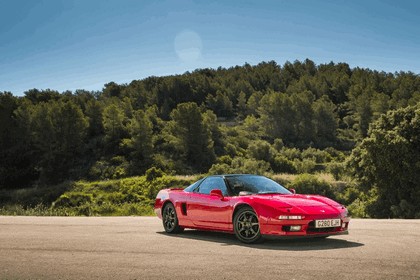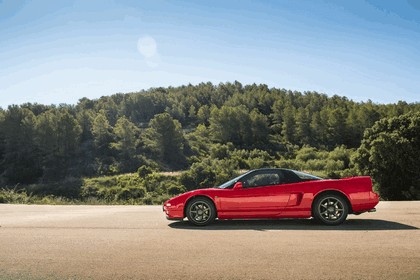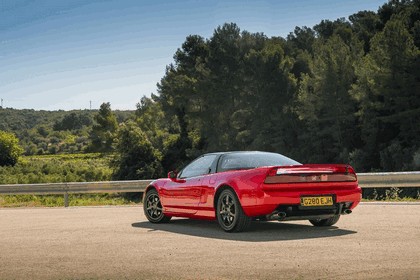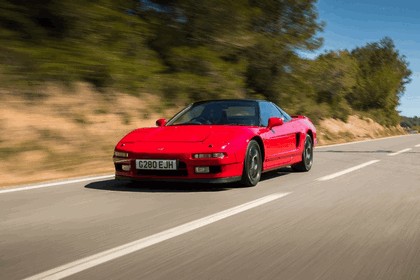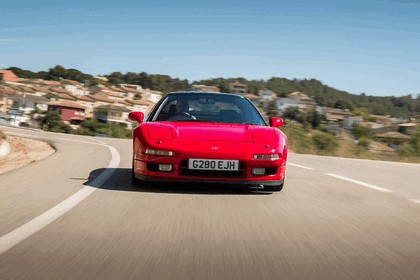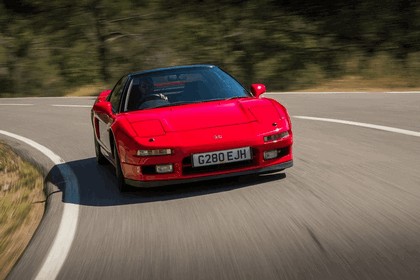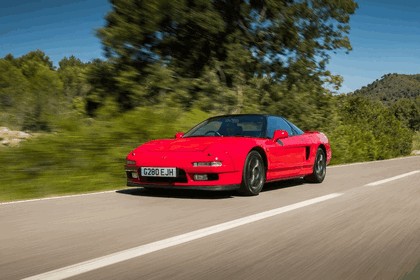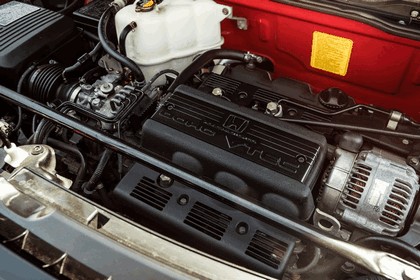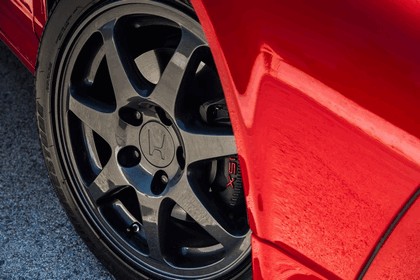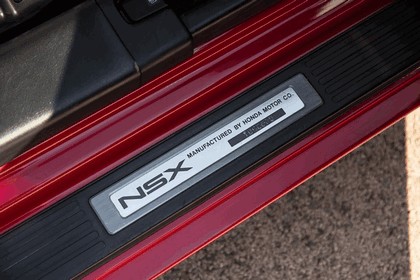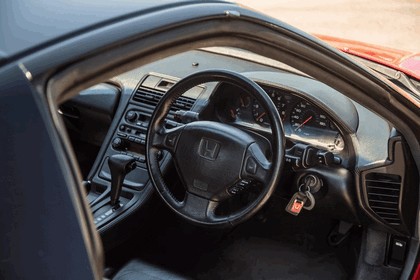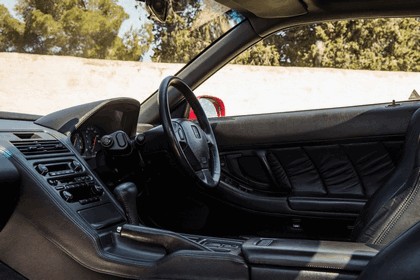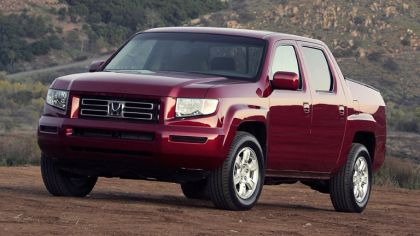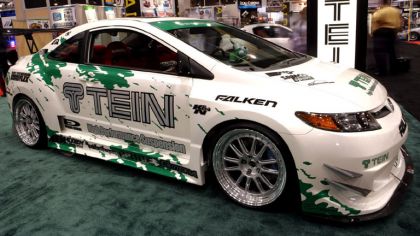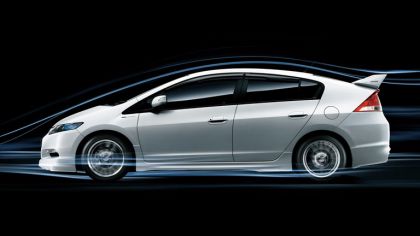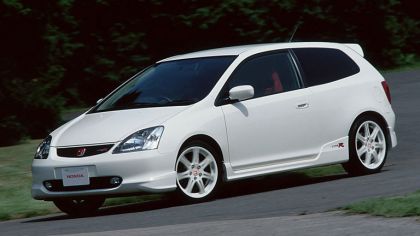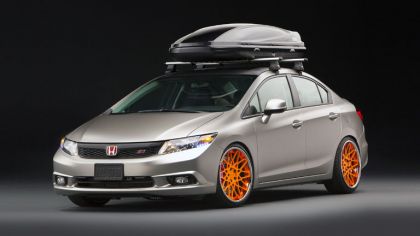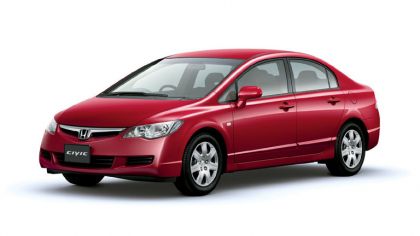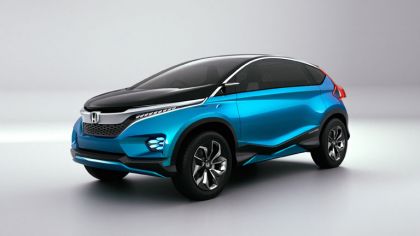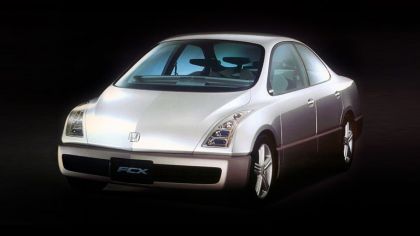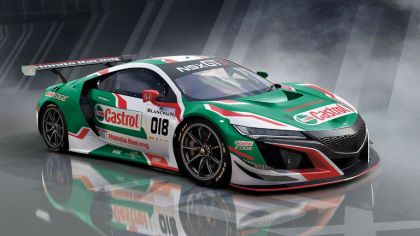Around 1984, Honda engineers began experimenting with different engine and chassis layouts to test viability for future products. One of the test mules was a Honda City that had been cut in half, with the engine installed behind the driver's seat and powering the rear wheels. Although the project was not developed any further, many of the engineers were inspired by the exciting laps around the company parking lot in the mid-engined City. This experience, in part, convinced Honda leadership that the company should consider developing a pure sports car. As a result, in 1984, Honda commissioned the Italian car styling house Pininfarina to design the concept car HP-X (Honda Pininfarina eXperimental), which had a C20A 2.0 L V6 engine in a mid-mounted configuration. After Honda committed to a sports car project, the company management informed the engineers working on the project that the new car would have to be as fast as anything coming from Italy and Germany. The HP-X concept car evolved into a prototype known as NS-X, which stood for "New", "Sportscar" "eXperimental". The prototype and eventual production model-which was marketed as the NSX-were designed by a team led by Honda Chief Designer Masahito Nakano, and Executive Chief Engineer Shigeru Uehara (who were subsequently placed in charge of the S2000 project).
The original performance target for Honda's new sports car was the Ferrari 328 (and later, the 348) as the design neared completion. Honda intended its sports car to meet or exceed the performance of the Ferrari, while offering superior reliability and a lower price. For this reason, the 2.0 L V6 engine utilised in the HP-X was shelved and ultimately replaced with a significantly more powerful 3.0 L VTEC V6 engine. Over the course of development of the Honda NSX, many engines were used, ranging from the 2.7-litre single overhead camshaft V6 engine from the Honda Legend/Honda Coupé to the 3.0-litre single overhead camshaft V6 engine, used subsequently in 15 test mules. Honda eventually settled on a non-VTEC, 3.0-liter double overhead camshaft 24-valve V6 engine selected for the production model. This engine generated a maximum power output of about 250 hp (186 kW; 253 PS) and 282 N⋅m (208 lb⋅ft) of torque, with a redline of 7,300 rpm. However, at the same time, Honda was working on its revolutionary VTEC variable valve timing system, with plans to release it on the company's home-market 4-cylinder Integra. Honda's then-president Tadashi Kume, himself a highly skilled and respected engine designer, questioned the NS-X designers' logic in foregoing the VTEC system for Honda's new flagship sports car, while it was being used on the lower-market Integra. As a result, the engine was redesigned very late in the development process "to achieve the desired levels of performance and durability"; Honda designed a new cylinder block with 6-bolt main caps and larger cylinder heads to contain the complex VTEC mechanism. Innovative connecting rods made from a titanium alloy were used to lower reciprocating weight, while increasing overall rod-strength-something which increased the engine's maximum rpm by 700, resulting in a final redline of 8,000 rpm. A consequence of this last-minute engine change was that the new C30A engine was too large to fit in the NS-X's engine bay, which had been carefully sized for the smaller heads of the non-VTEC DOHC 3.0 liter engine. As a result, the engineers were forced to tilt the entire engine backward approximately 5 degrees- a characteristic that continued all the way to the NSX's final production in 2005.
The exterior design had been specifically researched by Uehara after studying the 360-degree visibility inside an F-16 fighter jet's cockpit. Thematically, the F-16 came into play in the exterior design as well as establishing the conceptual goals of the Honda NSX. In the F-16 and other high performance aircraft such as unlimited hydroplanes along with open-wheel race cars, the cockpit is located far forward and in front of the power plant. This "cab-forward" layout was chosen to optimize visibility while the long tail design enhanced high speed directional stability. The NSX was designed to showcase several automotive technologies, many derived from Honda's F1 motor-sports program.
The Honda NSX was the first production car to feature an all-aluminium semi-monocoque, incorporating a revolutionary extruded aluminium alloy frame and suspension components. The use of aluminium saved nearly 200 kg (441 lb) of weight over the use of steel in the body alone, while the aluminium suspension arms saved an additional 20 kg (44 lb); a suspension compliance pivot helped maintain wheel alignment changes at a near zero value throughout the suspension cycle. Other notable features included an independent, 4-channel anti-lock brake system; an electric power steering system; Honda's proprietary VTEC variable valve timing system and in 1995, the first electronic throttle control fitted in Honda production car.
With a robust motorsports division, Honda had significant development resources at its disposal and made extensive use of them. Respected Japanese Formula One driver Satoru Nakajima, for example, was involved with Honda in the NSX's early on-track development at Suzuka race circuit, where he performed many endurance distance duties related to chassis tuning. Brazilian Formula One World Champion Ayrton Senna, who won many races in Formula One with Honda before his death in 1994, was considered Honda's main innovator in convincing the company to stiffen the NSX's chassis further after initially testing the car at Honda's Suzuka GP circuit in Japan. Senna further helped refine the original NSX's suspension tuning and handling by spending a whole day test driving prototypes and reporting his findings to Honda engineers after each of the day's five testing sessions. Senna also tested the NSX at the Nürburgring and other race tracks. As a result of Senna's input, Honda took the NS-X prototype to the Nürburgring to tune the chassis stiffness. Over the course of several months, the chassis was refined in a painstaking process: Nakajima would drive a lap on the circuit and then discuss with the Honda engineers where he felt flex in the chassis. The engineers would hand-weld aluminum braces in the area they believed would fix the issue and send the driver back out to confirm. This process was repeated over and over, with the data results sent directly to Honda headquarters in Japan, where it was fed into a Cray supercomputer and translated into reinforcements in the production aluminum monocoque. As a result of this process, the NS-X chassis stiffness increased by over 50% with only a small increase in weight. The suspension development program was similarly far-ranging and took place at the Tochigi Proving Grounds, the Suzuka circuit, the 179-turn Nürburgring Course in Germany, HPCC, and Honda's newest test track in Takasu, Hokkaido.
The NSX made its first public appearances in 1989, at the Chicago Auto Show in February and at the Tokyo Motor Show in October of that year, receiving positive reviews. Honda revised the car's name from NS-X to NSX before commencement of production and sales. The NSX went on sale in Japan in 1990 at Honda Verno dealership sales channels, supplanting the Prelude as the flagship model. The NSX was sold under Honda's Acura luxury brand starting in November 1990 in North America and Hong Kong.
Upon its official debut, the NSX design concept showcased Honda's technology, measuring only 1,170 mm (46 in) in height. The Japanese car maker's race track innovations and competitive history were further exemplified on the road by the NSX's ultra-rigid and ultra-light all aluminium monocoque chassis along with front and rear double wishbone suspension, with forged control arms connected to forged alloy wheels. The car additionally boasted the world's first production car engine with titanium connecting rods, forged pistons, and ultra high-revving capabilities - the redline was at 8,300 rpm - all traits usually associated with track and race engineered cars. The NSX's exterior had a dedicated 23-step paint process, including an aircraft type chromate coating designed for chemically protecting the aluminium bodywork and a waterborne paint for the base coat to achieve a clearer, more vivid top color and a smoother surface finish.
The car's chassis rigidity and cornering/handling capabilities were the results of Formula One driver Ayrton Senna's consultation with NSX's chief engineers while testing the NSX prototype at Honda's Suzuka Circuit during its final development. The NSX was initially assembled at the purpose-built Takanezawa R&D Plant in Tochigi from 1989 to early 2004, when it was moved to Suzuka Plant for the remainder of its production life. The cars were assembled by approximately 200 of Honda's highest-skilled and most experienced personnel, a team of hand-picked staff with a minimum of ten years assembly experience employed from various other Honda facilities to run the NSX operation.
